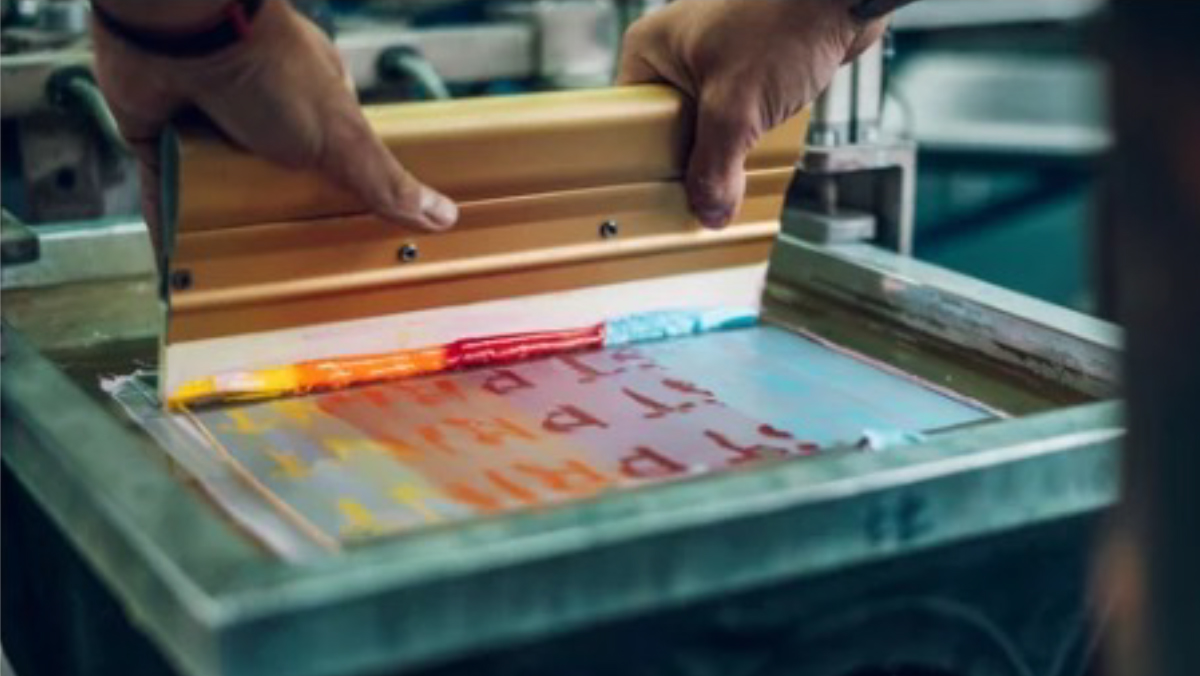Workwear Logos – Screen Print or Heat Seal?
Oct 19 2023 10:52AM

We personalise workwear using either embroidery or heat seal techniques, but we’re often asked about screen printing. People want to know how it differs from heat seal and which is best. So, we’ll take you through that here, and tell you why we favour the heat-seal method.
Screen Printing
Screen printing originated in China and has been used for centuries. In brief, a screen and a stencil are used to create a design. Ink is pushed through the screen onto the substrate which could be paper, textile, ceramic, glass or even metal. Originally screens were made of silk and the method is often called silk-screening.
The Pros of Screen Printing
Screen printing is versatile. The technique can be used on a wide range of materials to produce custom clothing, posters, signs, labels, and promotional products. The prints are also durable – ideal for printing clothing that has to withstand daily wear and tear, repeated washing and exposure to the elements.
Screen printing methods can produce vivid designs, even on dark-coloured substrates, using vibrant opaque inks. Designs can be intricate too – screen printing has high-resolution and fine-detail capabilities.
When large print volumes are required, screen printing delivers both consistent results and cost-effectiveness. With the initial set-up cost spread over the entire run, screen printing is often preferred for bulk orders.
The Cons of Screen Printing
With separate screens required for each colour in the design, the costs of set-up can be prohibitive for one-off printing or small volumes. Similarly, every colour in the design requires a separate screen and pass, so cost constraints can limit the use of colour.
Where designs have a colour gradient or incorporate a photograph, screen printing doesn’t work well. It’s also not ideal in applications where ink thickness is a consideration – for example in some fine-art prints. And although intricate designs are possible, they may require extra time, focus, effort and expertise.
Another downside of the method is that chemicals and solvents are often used to clean and prepare the screens. Some of the materials used can be harmful to the environment if not handled properly.
Heat Sealing
Heat-transfer printing, heat-press printing, heat sealing – various terms are used, but the technique is the same. A machine uses heat and pressure to transfer a design from heat-sensitive transfer paper, or vinyl, onto the target material.
The Pros of Heat Sealing
Firstly, heat sealing is quick and efficient. That makes it suitable for small or medium-sized production runs. It’s also a great option when customisation is required. Each item can have a different design without the need for expensive setup changes.
Heat sealing can be used on a wide range of materials, including cotton, polyester, nylon and blends, as well as on various garment types. Heat-sealed prints are typically durable and can withstand multiple washes and all sorts of environmental conditions.
Detailed, high-resolution designs are possible, including fine lines and small text. What’s more, there are no colour limitations with the technique. Full-colour, gradient and photorealistic images are all possible.
The Cons of Heat Sealing
Heat sealing is most effective on flat or slightly curved surfaces. It may not work well on irregularly shaped items or those with seams and creases like a baseball cap for example.
The print may have a slightly raised feel on the fabric, and its vinyl texture might not be desirable on the final product.
Finally, while it's efficient for small to medium-sized production runs, heat sealing can be time-consuming for very large orders.
Why Knights Uses Heat Seal
The heat seal technique offers us efficiency and versatility. We can use it on a wide variety of fabrics and garments, and when our customers want detailed graphics or full-colour designs, we can deliver them.
We’ve also found that the heat-seal method produces durable results that keep the wearer looking smart and professional. The method is also ideal for the small or medium-sized production runs typical within our operation.
We’ve found that by offering both quality heat-seal printing and embroidery, we’re covering the needs of practically every customer. But there’s one final thing we’d like to stress: we get excellent results with heat seal and embroidered logos because we use quality machinery and materials, and because our team have the necessary expertise. We do the work ourselves, so we know it’s top-notch.
